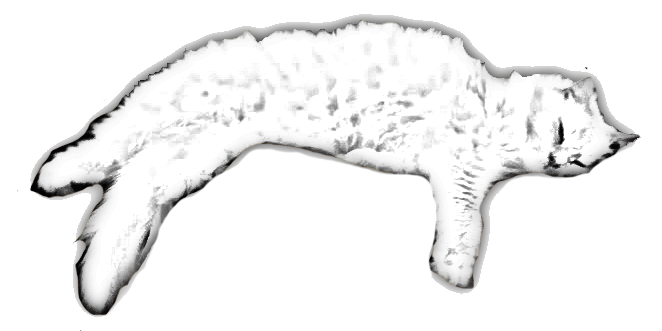Can you guess these rare indoor cat coat patterns? We've got a purr-fect quiz for you.
Get ready to be amazed by the unique and captivating coats of Persian, Siamese, Maine Coon, Bengal, and Scottish Fold cats. From mysterious patterns to majestic fur, these feline beauties are a sight to behold.
So, sharpen your claws and let's dive into the fascinating world of rare indoor cat coat patterns.
Get ready to be whiskered away!
Persian Cats: Unraveling the Mystery of Their Unique Coats
Let's explore the fascinating world of Persian cats and unravel the mystery behind their unique coats.
Persian cats are known for their luxurious, long fur and distinct coat patterns. To understand their coats, we must first unravel the genetics behind them.
Persian cats have a gene called the 'longhair gene,' which is responsible for their beautiful, flowing coats. This gene determines the length and texture of their fur, as well as the presence of patterns such as solid colors, tabby markings, or tortoiseshell patterns.
Additionally, Persian cats have specific grooming needs due to their long fur. Regular brushing is essential to prevent matting and keep their coats healthy and shiny.
Understanding the genetics and grooming needs of Persian cats is key to maintaining their stunning coats.
Siamese Cats: Exploring Their Rare and Striking Coat Patterns
Exploring Siamese cats' rare and striking coat patterns is an intriguing journey. To understand these patterns, we must delve into Siamese cat genetics and the phenomenon known as color point patterns.
Siamese cats are known for their distinct coat colors, with a lighter body and darker points on their extremities, such as the ears, face, paws, and tail. This pattern is caused by a temperature-sensitive gene that inhibits the production of melanin in cooler areas of the body.
As a result, the warmer areas develop darker pigmentation. This unique genetic trait gives Siamese cats their characteristic appearance.
Through a better understanding of the genetic mechanisms behind color point patterns, we can appreciate the rare and striking coat patterns of Siamese cats even more.
Maine Coon Cats: Unlocking the Secrets Behind Their Majestic Fur
As we delve into the topic of Maine Coon cats, we can uncover the secrets behind their majestic fur. Maine Coon cats are known for their long, thick, and luxurious coats, which require proper care to maintain their beauty.
Grooming is essential for these long-haired cats to prevent tangles and matting. Regular brushing is recommended to remove loose hair and prevent the formation of hairballs. It's important to use a comb or brush specifically designed for long-haired cats to avoid damaging their delicate fur.
Additionally, occasional baths can help keep their coats clean and free from dirt and oils. Trimming the hair around their hindquarters can prevent fecal matter from sticking to their fur.
Bengal Cats: Discovering the Exotic Patterns of Their Indoor Coats
We can marvel at the exotic patterns of Bengal cats' indoor coats while learning more about their unique characteristics.
Bengal cats are known for their striking coat patterns, which are a result of their genetics. These patterns are a combination of two genes: the spotted tabby gene and the marbled tabby gene.
The spotted tabby gene produces distinct spots on the cat's coat, while the marbled tabby gene creates a swirled or marbled pattern. The origins of Bengal cat coat patterns can be traced back to their wild ancestor, the Asian leopard cat.
Through selective breeding, breeders have been able to preserve and enhance these unique coat patterns in domestic Bengal cats. Understanding the genetics behind these coat patterns allows us to appreciate the beauty and diversity of Bengal cats' indoor coats.
Scottish Fold Cats: Delving Into the Uncommon Coat Patterns of This Adorable Breed
While Scottish Fold cats may be known for their adorable appearance and unique folded ears, we can also explore the uncommon coat patterns that make this breed even more fascinating. Delving into the genetics behind Scottish Fold coat patterns reveals a range of variations that contribute to the breed's aesthetic appeal.
Here are three notable coat patterns found in Scottish Fold cats:
- Tabby: This pattern is characterized by bold, swirling stripes on the cat's fur. It can come in a variety of colors, including classic tabby, mackerel tabby, and ticked tabby.
- Tortoiseshell: Also known as 'tortie,' this pattern consists of a mix of black and orange patches on the cat's coat. The distribution and size of the patches can vary, creating unique and intricate designs.
- Colorpoint: This pattern features a lighter body color with darker points on the ears, face, paws, and tail. The contrast between the body color and the darker points creates a striking visual effect.
Exploring the different color variations in Scottish Fold cats further enhances our understanding of their coat patterns and the genetics behind them.
Conclusion
In conclusion, the world of indoor cat coat patterns is a fascinating and diverse one. From the intricate patterns of Persian cats to the striking coats of Siamese cats, each breed offers a unique and beautiful display of colors and markings.
Interestingly, did you know that only 5% of Bengal cats exhibit the rare 'marble' coat pattern? This statistic highlights the rarity and exclusivity of this particular pattern, adding to the allure and appeal of Bengal cats to cat enthusiasts.




0 Comments